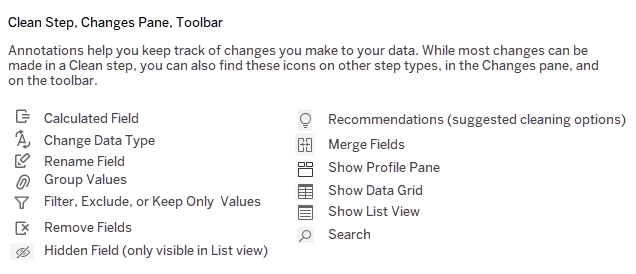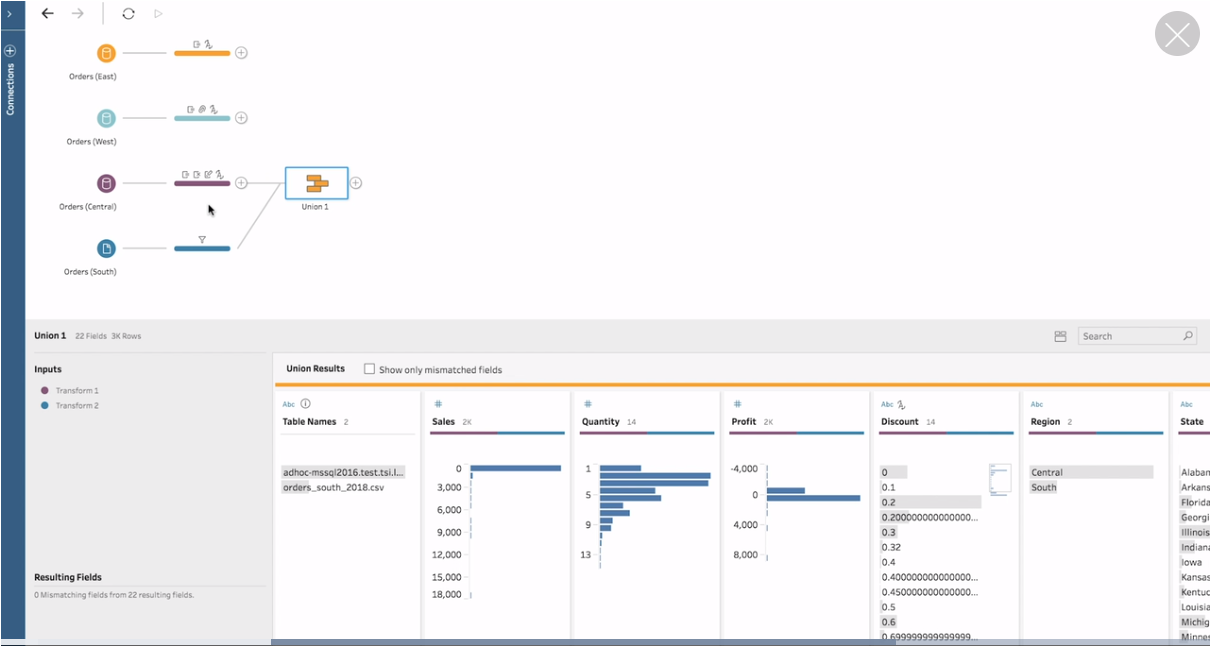

It is essential to understand the data quality for every field. While you can edit aliases, change data types, split fields, and write calculations in Tableau, it’s a lot easier to perform these actions upfront, especially when creating the data set for someone else. In Tableau, your analysis will be impacted by data types-and it is important to appropriately identify each field before diving in. This can be done at any point in your flow. You can simply click on a value in the data pane and exclude it. There may be irrelevant or incorrect data that you want to remove. For example, if you know you only need to look at sales data from the last two years, filter your date field to that time frame with the range or relative date filter. You probably don’t need the original column you just split, so go ahead and delete it.įiltering your data also saves time in the process and ensures you’re doing the right analysis. Hint: While you’re going through your preparation process, you may also start splitting fields, breaking them into multiple columns. If at any point during your preparation, there is a field you realize you no longer need, you can simply remove the field during your flow. It’s only an indication of when the product left the warehouse-so you can likely remove it from the data source. In this case, you may not need to include details around the ship date for every product because it won’t tell you much about the sale or why a customer bought the product. You know that you’ll later bring this data set into Tableau to analyze sales performance for the year. Let’s say you’re preparing a data set that represents your company’s sales and product data. To optimize the overall performance of your data prep process, limit the fields you bring into Tableau Prep to the ones you'll need for your analysis. This gives you a more representative sample, while helping with performance. By adding a filter at the input step, you ensure that the data that is pulled into your data set is relevant to your analysis. This option is not available for all data sources and may also impact performance. The database looks at every row and returns a sample. The random sampling happens on the database level, returning the number of rows requested. By default, Tableau Prep will calculate the optimal number of rows to return depending on the total number of fields in the set and the data types of those fields. this does not necessarily mean the top 1,000 rows in the database).

Another caveat is that using a fixed number of rows will return what the underlying database uses as criteria for the fastest way to return the rows requested (i.e. You can increase the number of rows or include all the data, but be aware this could slow down the performance. Go back to the input step and adjust the number of rows for the sample.
#Tableau prep help full
There may be times where you want to see the full data set and Tableau Prep lets you do either. When you connect to a large data set, you’ll probably want to limit it to a sample of the data to increase the speed of your data prep process and to optimize performance. It is often necessary to pull in outside data sources to get the complete story. For example, you might analyze student test scores in your district and want to see how socioeconomic statuses play a role, so you integrate census data. Ask yourself: Is the data in a single table or in multiple tables in a single database? You may need to combine multiple databases to get to the root of your questions-or if you need a more robust view, you may need to bring in an external data source. Once you can access the necessary data, you'll need to determine where it all lives. To see more about how data should be structured for analysis in Tableau Desktop, visit the online help page. For example, do you even have the right permissions to access a given data source and is it in the right shape? In other words, when you bring it into Tableau, can you do the analysis you want? You’ll need to address both of these questions before you even start the preparation process. There are some basic considerations when it comes to this question. Reference Materials Toggle sub-navigation.

Teams and Organizations Toggle sub-navigation.


 0 kommentar(er)
0 kommentar(er)
